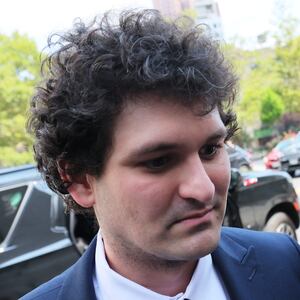After spending weeks listening to testimony that painted him as a criminal mastermind, FTX founder Sam Bankman-Fried is finally getting the chance to tell his side of the story.
On Monday, his defense counsel rested after two days of direct examination and federal prosecutors began trying to corner him under cross-examination.
Bankman-Fried is facing off against Assistant U.S. Attorney Danielle Sassoon, a 37-year-old Yale Law School graduate who paces her questions in a languid manner that could wrongly be interpreted as friendliness.
Almost immediately, Sassoon began turning the screws on Bankman-Fried when he attempted to give vague answers about his recollection of FTX’s collapse, including about his level of involvement at a trading firm he also owned called Alameda Research.
The dynamic persisted throughout the day. Sassoon repeatedly asked Bankman-Fried if he had given certain quotes to journalists, and he would respond by telling her he couldn’t recall; she would then pull up the original source material—a pattern that made him look either forgetful or evasive.
Judge Lewis Kaplan also rebuked the former billionaire for failing to answer her questions directly, grumbling, “Look, could you just answer the question?”
During one exchange, Sassoon asked Bankman-Fried if he tells a good story. “It depends what metric you use,” he replied.
In another, she asked him whether he’s “a pretty smart guy.”
“In some ways, not all ways,” he said.
She asked if he “called the shots” at FTX.
“Some,” he said.
Additionally, Sassoon forced Bankman-Fried to confront embarrassing statements he previously made in private, including one case where he declared, “Fuck regulators,” and another in which he blasted members of the crypto community who were active on Twitter as “dumb motherfuckers.” Both comments starkly contrasted his effort at the time to brand himself as a rule-abiding, professional steward of customer assets.
Bankman-Fried is accused of perpetrating a massive fraud at FTX by taking billions of dollars of customer deposits, loaning those funds to Alameda, and using that money for venture capital investments and to pay off debts.
He claims he was ignorant of the details of Alameda’s liabilities and said he entrusted the firm’s CEO, Caroline Ellison, to properly manage the business. “There were significant oversights,” he conceded during his testimony on Friday. On Monday, he added that he sometimes gave his subordinates “suggestions.”
Earlier in the trial, Ellison told the jury a very different version of the facts, arguing that Bankman-Fried “directed” her to misrepresent Alameda’s finances and insisting that he was fully aware of the risks the company was taking on. (Ellison pleaded guilty to seven counts last year.)
Bankman-Fried conceded on Monday that he “screwed up” in one instance by allegedly failing to tell investors about a massive loss FTX sustained when a customer exploited its risk protocols in the spring of 2022. He is accused of shifting that loss to Alameda to avoid having it appear on FTX’s books.
During another pointed exchange, Sassoon tried several times to extract a direct answer about whether he knew FTX customer funds might not be repaid if Alameda struggled to maintain its financial footing.
“I did not at that time think the odds of that were significant,” he retorted, declining to say yes or no.
Last week, in an unusual twist, Bankman-Fried was able to practice squaring off against Sassoon without the jury present. Kaplan said he couldn’t rule on which elements of Bankman-Fried’s testimony would be admissible without first hearing it. (He later forbade Bankman-Fried from blaming his lawyers for his alleged crimes.)
During that practice, the former billionaire appeared nervous and squirrely, gulping water, shifting in his chair, and stammering through answers.
He was much more composed on Monday, parrying many of Sassoon’s questions with “yep” or “sounds plausible.” Ultimately, the jury will decide whether his explanation for FTX’s demise is enough to outweigh the government’s weeks-long case.







